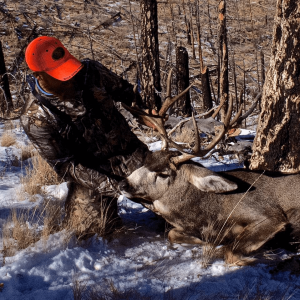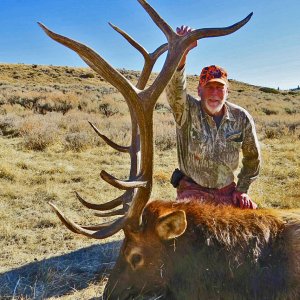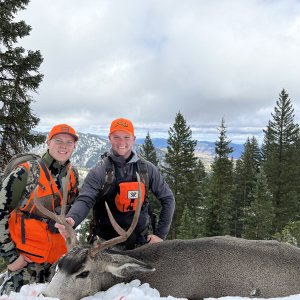> > INTERESTING HISTORY LESSON
> >
> > Railroad tracks.. This is fascinating.
> >
> > Be sure to read the final paragraph; your
> understanding of
> > it will depend on the earlier part of the content.
> > The US standard railroad gauge (distance between the
> rails)
> > is 4 feet, 8.5 inches. That's an exceedingly odd
> number.
> >
> >
> > Why was that gauge used? Because that's the way
> they
> > built them in England, and English expatriates built
> the US
> > railroads.
> >
> > Why did the English build them like that? Because the
> first
> > rail lines were built by the same people who built the
> > pre-railroad tramways, and that's the gauge they
> used.
> >
> > Why did 'they' use that gauge then? Because
> the
> > people who built the tramways used the same jigs and
> tools
> > that they use d for building wagons, which used that
> wheel
> > spacing.
> >
> > Why did the wagons have that particular odd wheel
> spacing?
> > Well, if they tried to use any other spacing, the
> wagon
> > wheels would break on some of the old, long distance
> roads
> > in England, because that's the spacing of the
> wheel
> > ruts.
> >
> > So who built those old rutted roads? Imperial
> Romebuilt the
> > first long distance roads in Europe (andEngland ) for
> their
> > legions. The roads have been used ever since.
> >
> > And the ruts in the roads? Roman war chariots formed
> the
> > initial ruts, which everyone else had to match for
> fear of
> > destroying their wagon wheels. Since the chariots were
> made
> > for Imperial Rome, they were all alike in the matter
> of
> > wheel spacing. Therefore the United States standard
> railroad
> > gauge of 4 feet, 8.5 inches is derived from the
> original
> > specifications for an Imperial Roman war chariot..
> > Bureaucracies live forever.
> >
> > So the next time you are handed a specification/
> > procedure/process and wonder 'What horse's ass
> came
> > up with it?', you may be exactly right. Imperial
> Roman
> > army chariots were made just wide enough to
> accommodate the
> > r ear ends of two war horses. (Two horse's asses.)
> Now,
> > the twist to the story:
> >
> > When you see a Space Shuttle sitting on its launch
> pad,
> > there are two big booster rockets attached to the
> sides of
> > the main fuel tank. These are solid rocket boosters,
> or
> > SRB's. The SRB's are made by Thiokol at their
> > factory in Utah . The eng ineers who designed the
> SRB's
> > would have preferred to make them a bit fatter, but
> the
> > SRB's had to be shipped by train from the factory
> to the
> > launch site.. The railroad line from the factory
> happens to
> > run through a tunnel in the mountains, and the
> SRB's had
> > to fit through that tunnel. The tunnel is slightly
> wider
> > than the railroad track, and the railroad track, as
> you now
> > know, is about as wide as two horses' behinds.
> >
> > So, a major Space Shuttle design feature of what is
> > arguably the world's most advanced transportation
> system
> > was determined over two thousand years ago by the
> width of a
> > horse's ass. And you thought being a horse's
> ass
> > wasn't important? Ancient horse's asses
> control
> > almost everything... and
> > CURRENT Horses Asses are controlling everything else.
> >
> > Railroad tracks.. This is fascinating.
> >
> > Be sure to read the final paragraph; your
> understanding of
> > it will depend on the earlier part of the content.
> > The US standard railroad gauge (distance between the
> rails)
> > is 4 feet, 8.5 inches. That's an exceedingly odd
> number.
> >
> >
> > Why was that gauge used? Because that's the way
> they
> > built them in England, and English expatriates built
> the US
> > railroads.
> >
> > Why did the English build them like that? Because the
> first
> > rail lines were built by the same people who built the
> > pre-railroad tramways, and that's the gauge they
> used.
> >
> > Why did 'they' use that gauge then? Because
> the
> > people who built the tramways used the same jigs and
> tools
> > that they use d for building wagons, which used that
> wheel
> > spacing.
> >
> > Why did the wagons have that particular odd wheel
> spacing?
> > Well, if they tried to use any other spacing, the
> wagon
> > wheels would break on some of the old, long distance
> roads
> > in England, because that's the spacing of the
> wheel
> > ruts.
> >
> > So who built those old rutted roads? Imperial
> Romebuilt the
> > first long distance roads in Europe (andEngland ) for
> their
> > legions. The roads have been used ever since.
> >
> > And the ruts in the roads? Roman war chariots formed
> the
> > initial ruts, which everyone else had to match for
> fear of
> > destroying their wagon wheels. Since the chariots were
> made
> > for Imperial Rome, they were all alike in the matter
> of
> > wheel spacing. Therefore the United States standard
> railroad
> > gauge of 4 feet, 8.5 inches is derived from the
> original
> > specifications for an Imperial Roman war chariot..
> > Bureaucracies live forever.
> >
> > So the next time you are handed a specification/
> > procedure/process and wonder 'What horse's ass
> came
> > up with it?', you may be exactly right. Imperial
> Roman
> > army chariots were made just wide enough to
> accommodate the
> > r ear ends of two war horses. (Two horse's asses.)
> Now,
> > the twist to the story:
> >
> > When you see a Space Shuttle sitting on its launch
> pad,
> > there are two big booster rockets attached to the
> sides of
> > the main fuel tank. These are solid rocket boosters,
> or
> > SRB's. The SRB's are made by Thiokol at their
> > factory in Utah . The eng ineers who designed the
> SRB's
> > would have preferred to make them a bit fatter, but
> the
> > SRB's had to be shipped by train from the factory
> to the
> > launch site.. The railroad line from the factory
> happens to
> > run through a tunnel in the mountains, and the
> SRB's had
> > to fit through that tunnel. The tunnel is slightly
> wider
> > than the railroad track, and the railroad track, as
> you now
> > know, is about as wide as two horses' behinds.
> >
> > So, a major Space Shuttle design feature of what is
> > arguably the world's most advanced transportation
> system
> > was determined over two thousand years ago by the
> width of a
> > horse's ass. And you thought being a horse's
> ass
> > wasn't important? Ancient horse's asses
> control
> > almost everything... and
> > CURRENT Horses Asses are controlling everything else.














